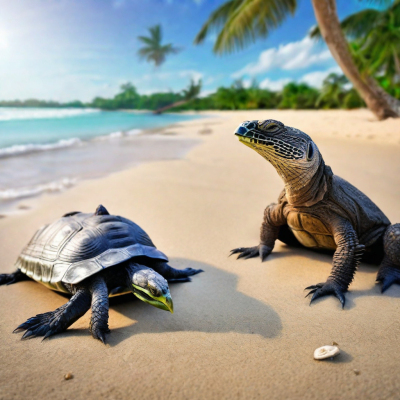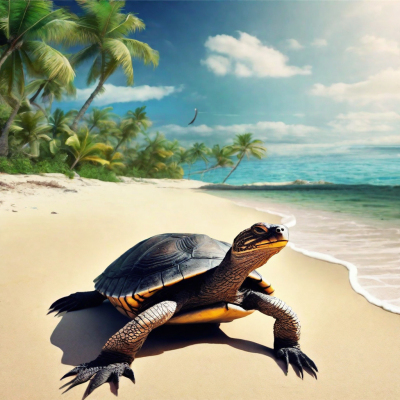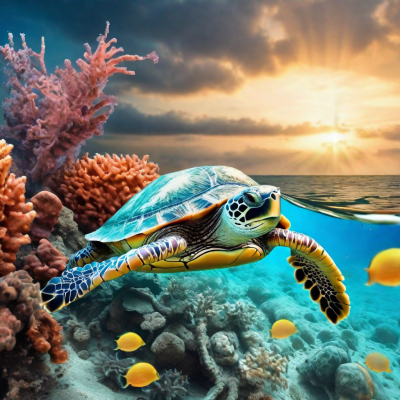Chapter 2
The Plight of Suko, the Leatherback Turtle
Suko, a leatherback turtle, embarked on a journey that highlighted the threats faced by marine life in the face of global environmental changes. Starting from Rantau Abang, he navigated through busy waters, encountering challenges such as shipping lanes and litter. Despite these obstacles, Suko thrived in the warm Indonesian seas, which had been his species' home for centuries.
As he grew older, Suko was pulled towards the Pacific by strong undercurrents, exposing him to unfamiliar and acidifying conditions. Despite the challenges, he persevered, driven by his instinctual search for a mate. His journey took him towards Japan, where he faced new obstacles, including intensified naval operations and the entanglement of endangered marine life in ghost nets.
Suko's sturdy armor and intelligence allowed him to survive where others perished. However, the disruption of age-old turtle routes due to warmer equatorial currents became an additional challenge for Suko. His extraordinary journey not only showcases nature's resilience but also emphasizes humanity's impact on global interconnectedness, underscoring the urgent need for collaborative conservation efforts.
Suko's journey highlights the impact of human activities on marine life, including pollution, overfishing, and climate change. The disruption of turtle routes due to warmer equatorial currents is a direct result of climate change, which is caused by human activities such as burning fossil fuels and deforestation. The entanglement of endangered marine life in ghost nets is also a result of human activities, such as overfishing and the careless disposal of fishing gear.
The impact of human activities on marine life is not limited to Suko's journey. Many other marine species are facing similar challenges, including whales, dolphins, and fish. The pollution of oceans with plastic and other waste has become a major threat to marine life, with many animals mistaking plastic for food and dying as a result. Overfishing has depleted many fish populations, leading to the collapse of fisheries and the loss of livelihoods for people who depend on them.
Suko's journey also underscores the need for collaborative conservation efforts. The disruption of turtle routes and the entanglement of endangered marine life in ghost nets are not issues that can be solved by one country or organization alone. It requires a concerted effort from governments, non-governmental organizations, and local communities to protect marine life and their habitats. This includes reducing pollution, implementing sustainable fishing practices, and protecting marine habitats.
In conclusion, Suko's journey highlights the urgent need for collaborative conservation efforts to protect marine life and their habitats. The impact of human activities on marine life is a global issue that requires a global response. By working together, we can protect marine life and preserve the natural beauty of our oceans for future generations.
AI ART by ABRamlee




 +10
+10









